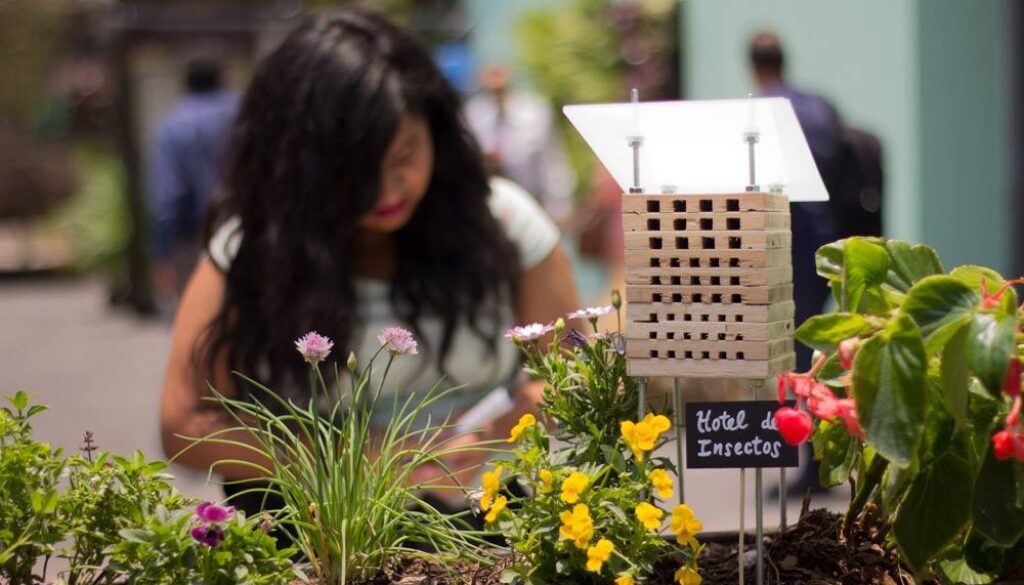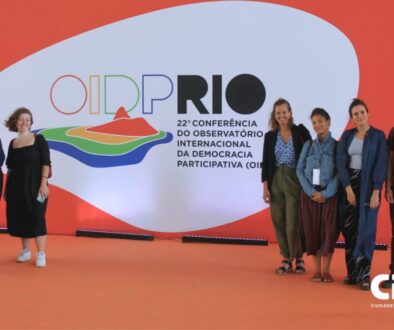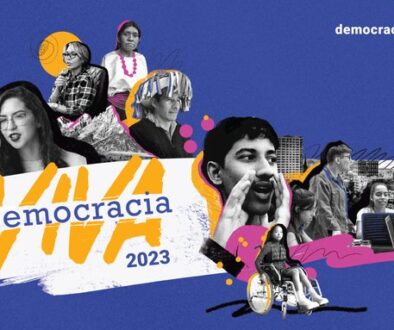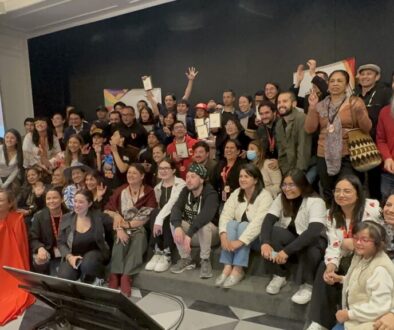What Latin America teaches us about the participatory recovery of public space
Getting your Trinity Audio player ready... |
The region is accumulating more and more successful experiences of urban interventions, where the community is the protagonist. The challenge now is how to project that impact in order to have greater incidence. A topic of discussion at the III Forum on Urban Interventions, held in Peru.
Ocupa Tu Calle is just a sample. This initiative arose three years ago, with the support of the Observatorio Ciudadano Lima Cómo Vamos and the support of the Avina Foundation. Initially, they sought to recover disused spaces located in the city of Lima, improve the condition of existing spaces and generate new public spaces. Today, this strategy has transcended the limits of its area of influence. The scope of its work now encompasses 27 interventions in Peru and more than 500,000 people have benefited from the improvement of their environment.
Latin America gathers hundreds of successful experiences of this type. Many of them generate important impacts at the local level. But now the challenge is to transcend and project themselves into the region to have a greater impact. This discussion was raised at the III Forum on Urban Interventions, held from August 8 to 10 in Lima (Peru), where the promoters of six social projects talked about their cases of participatory recovery of public space.
From the voices of their protagonists, we heard how each of these initiatives came about, the challenges they faced and the way in which they have acted to influence decision-making. The debate brought to the table the need to create networks at the regional level to project the scope and continue generating actions that awaken in citizens the motivation to want to live in a better environment.
Rosario Fassina. Asociación Civil por la Igualdad y la Justicia. Argentina.
“The slums in Buenos Aires are a sign of the housing crisis, because those who live there suffer from deficiencies in terms of public services, housing construction and connectivity with the city.
One of the problems we identified -and which was the reason for the Caminos de la Villa project- is that these places did not appear on the maps of the city of Buenos Aires. Therefore, since 2013 we have been mapping each of these slums by hand, in a very artisanal way, with a GPS.
This is how we managed to generate these maps, which we uploaded to a platform called Caminos de la Villa, which allows us to geolocate each of the problems related to public services. Not only to make them visible, but also to call attention to the fact that there are people there and the conditions in which they live through the claims.
In 2015, after doing a lot of lobbying with our platform, the media began to disclose that a civil society organization had drawn up maps of the villas, which were not on the official maps. This media impact made the government of the city of Buenos Aires publish them in its official maps, recognizing the existence of these slums.
Carolina Tarrío. Movimiento Boa Praça Brasil.
“El Movimiento Boa Praça was born from a dilemma: public spaces or squares are abandoned because they are a disaster or they are a disaster because nobody goes there. When nobody goes, they are bad. This leads to a circuit, which leads to violence, fear and confinement.
The strategy was that regardless of how the places were, we started to occupy them with a very simple thing: invite the neighbors to have a picnic in that place and start working to improve it with different possibilities (maintenance, activation programs). Sometimes the solutions are very simple. The main thing is to listen to what is happening in order to intervene.
From that first experience, we started knocking on doors and inviting us to other neighborhoods to intervene in their squares. That led us to think about how to generate more scale and how to gain incidence. Then, we decided to do three things: continue acting locally, give visibility to the initiative and inspire other people.
Every time we have a picnic it is publicized on Facebook. Everyone is invited so that people in other neighborhoods can follow in our footsteps. And we started to generate manuals so that other people, groups or neighbors would not have to live our learning path, but would do things in a simpler way. It is a manual to know how to call the neighbors, how to contact the public power, among other topics”.
Roberto Gossi. Red Uruguaya de Ciudades Sostenibles.
“Through the Red Uruguaya de Ciudades Sostenibles, we are providing support and facilitating the process, both institutionally and through participation in the departmental board, for the recovery of public spaces and the process of regulating irregular settlements. In the case of Parque Rodó in Montevideo, for example, we are working on strengthening urban furnishings, to make them really useful, with social chargers and connectivity.
In this process, we have learned that public space is nothing more than a reflection of the value that everyone has of coexistence and of the country’s institutional system in general. It is necessary to have a participatory design. But design is one part, management is another. Management must also be participatory. And this then has to be scaled up to political incidence.
Institutions, parliaments, participatory budgets, everything that has to do with the interaction of the citizen with the political system is an essential part of that public space. Let us say that it is the intangible public space. It is useless to have swings, well-painted benches, with recycling, if we do not know that we have to take advantage of that public space with clear rules”.
Alicia Ferreira. Acciones de Paz. Colombia
“From the Avina Foundation, we took on the task of implementing a piloting of public policies in the Department of Nariño, based on transparency and collaborative economy. The purpose was to transform the public space in a real participatory way in all its parts. From an interactive mapping to the community choosing the spaces to intervene. Fundación Avina supported this process and replicated it in Tumaco and Ipiales.
Beyond the transformation of public space, the idea is its self-governance, that people can live territorial peace after more than 50 years of internal armed conflict, that the inhabitants of these territories that are moving towards demobilization can live in peace, through small actions and activities in their neighborhoods.
The public space is an excuse to build citizenship, to rebuild the social fabric and strengthen relationships of trust, which, in the end, is what matters most. The different actors that make life in the cities of Colombia have coexisted in this space in a very hostile way. The purpose has been how, through the reconstruction of public space, they can change the way they relate to each other, create trust and build a different Colombia.
Piero Barandiarán. Huerto Roma Verde. México.
“Huerto Roma Verde is an experience we have called biosocial. We set out to rediscover new ways of relating to the land, because that also gives us another kind of perspective, of knowledge. We work in the space in a transversal way. We do not only deal with agriculture, but we bring together many specialists from different areas, always based on the land and its care.
Our philosophy seeks to integrate collective needs, not only social needs, but also environmental needs. We are already facing environmental problems at the city level, such as water scarcity. Why is water scarce in Mexico, for example? Because more than 70 % of the water is contaminated and this leads to a lack of access. What do we do in the public space? We use biodigesters and that helps us process fecal waste, urine, and transforms it into methane gas.
We also work with other specialists who have this same sense and vision of taking care of the land and a long-term vision. In this way, we are facing the problems that we are seeing in the future. Because there are many things that are not seen and not talked about. Air quality in Mexico, for example, is killing 18,000 people. Huerto Roma Verde’s proposal is to make these problems visible and solve them through local actions.
We believe that if we can generate this governance in our block we can have a positive impact at the city level. And that is what has been happening. These concepts have been replicated in other spaces. Many of the specialists who work with us collaborate with government and with companies. This gives us other margins of co-responsibility with the public and private sectors. It is not only felt in a part of the organized civil society, but there are also beginning to be bridges for dialogue with other entities”.
This article was originally published on August 19, 2018 in La Network.




